Do you ever find yourself in situations where you really need to focus on work, but you are constantly being interrupted by email and chat notifications?
Or, you simply have no time for deep work because of endless soul-crushing meetings?
We’ve all been there. And, oh boy, it was so good when we adopted asynchronous communication practices at work.
If you want to find out more about async communication and how you can use it effectively, it’s simple — just keep reading.

In this article:
What is asynchronous communication?
If we were to define asynchronous communication, we could say that it is any form of communication where you don’t expect to receive an immediate reply.
To put it simply — asynchronous communication does not occur in real time. After you send a message, there is usually a time lag before the recipient replies.
Even though the term sounds rather technical, this type of communication is actually extensively used by remote workers, especially if they are working across time zones.
💡 Plaky Pro Tip
To successfully communicate asynchronously, you need the right tools. Here’s a list of the crucial remote work software for all your needs:
Asynchronous communication examples
Depending on the message they need to pass on, both in-office workers and remote teams make use of various forms of asynchronous or time-neutral communication, such as:
- Email,
- Text messages,
- Voice messages,
- Recorded video messages,
- Google Docs,
- Internal wikis, and
- PM tools.
All these types of asynchronous communication are nowadays used as a standard practice in regular business communication, and they are recognized as valuable solutions when real-time communication is not the best option.
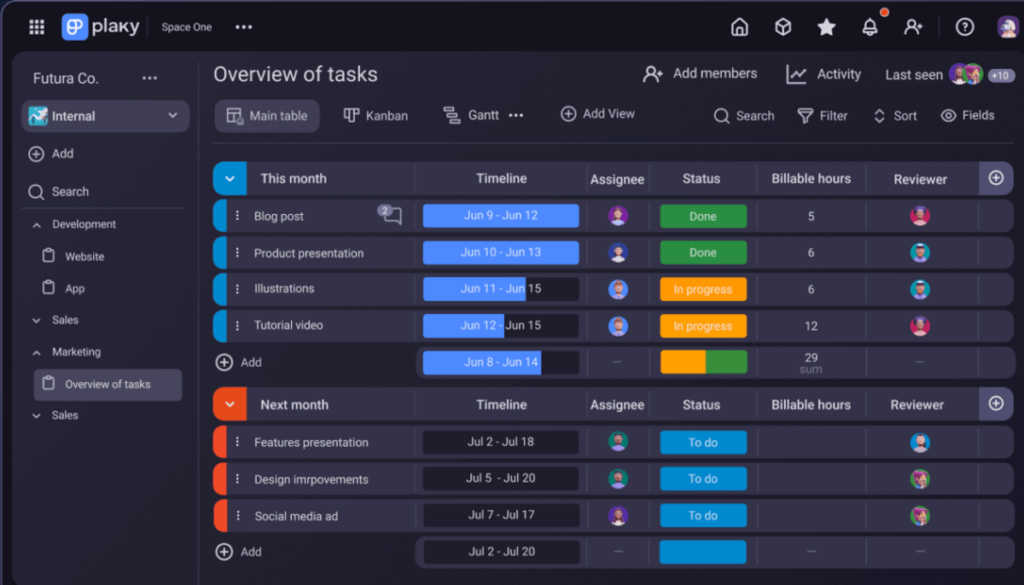
What is synchronous communication?
Synchronous communication is a method of communication where the participants are in sync and communicate in real time.
Unlike its asynchronous counterpart, synchronous communication presumes an immediate response and implies that 2 or more parties are talking or exchanging messages at the same time.
Also, being a 2-way process, synchronous communication is the default method of exchanging information. So, it comes to us naturally!
Synchronous communication examples
With synchronous communication, the response time is typically fast. Some of the examples of this type of communication are:
- Face-to-face conversations,
- In-person meetings,
- Instant messaging,
- Phone calls,
- Video conferencing,
- Live training sessions, and
- Virtual meetings.
You might prefer asynchronous to synchronous communication or vice versa, but both types have their pros and cons.
Sometimes, it’s better to make a phone call, whereas other times, a text message should do the trick. So, choose the ideal option based on the benefits and drawbacks of each type of communication.
Benefits of asynchronous communication
This communication type does not give way to time and location. Here are some of the benefits it offers.
Improves your productivity and frees up time for deep work
One of the benefits of asynchronous communication is that it has a significant impact on your overall productivity. After all, you have more control over your work schedules when no one expects you to be “on” and available all the time.
When using this type of communication, you are free to prioritize tasks and respond to messages based on how urgent they are. As a result, you can use your peak productivity periods in the best way.
Asynchronous communication also lets you dedicate enough time to deep work and complete your main tasks with undivided focus.
Minimizes your meeting fatigue
Have you ever spent all day in video calls and meetings and were left thinking that time was not on your side? Time slips away while you’re in endless meetings, leaving you with less of it to focus on other important work.
Of course, face-to-face meetings are (and will be) necessary in certain cases.
But if they are poorly managed and without purpose, there is no point in wasting precious time on them. By using asynchronous communication methods, you can still interact productively with your team, reduce stress, and stay far away from the land of burnout.
Facilitates inclusivity
Non-real-time communication allows everyone to contribute and puts all team members on the same footing.
Regardless of your communication preferences, you can choose from a range of async communication methods. Anyone can take part in conversations if they want and at the time that suits them best.
Removes time zone constraints
Ever since remote work became widely accepted, the labor market has expanded. Companies are able to search for the best people around the globe and create diverse teams.
As long as projects are well planned and everyone gets the information they need, it is perfectly OK to pass on work at the end of the workday to a colleague who is time zones away.
The reality is — working in multiple time zones and with distributed teams implies more written communication and a longer response time.
Manage distributed teams with Plaky
Upgrades information-sharing
Remote teams are generally used to sharing information in writing. Therefore, maintaining a clear record of all relevant information is crucial.
In work environments that support async communication, it is expected that all written communication is detailed enough so that reviewers can easily understand project information and lessons learned.
Whether you choose to keep all documented information on a shared drive or keep track of it via task management software, everything should be transparent and available for reference to all interested parties.
Gives you more autonomy
Last but not least, async communication gives you more autonomy to plan your workdays and respond when you choose to. With a minimized number of distractions, you are free to work on your own schedule.
In addition, team members get a chance to solve problems, provide ideas, and make decisions on their own time. And, with more time to think, you can provide higher-quality solutions.
Drawbacks of asynchronous communication
Still, async communication comes with certain drawbacks that you should definitely consider when choosing what type of communication to use.
Lacks immediate feedback and support
One of the main drawbacks of async communication is the time lapse between the moment you send a message and the moment you receive a response.
The fact that this communication form does not happen in real time may be challenging for team members to adapt to since there is no immediate feedback and support in case certain issues arise.
What’s more, delays in decision making can cause problems with schedules and tasks, leading to standstill periods.
Favors longer timelines
This type of communication allows lots of flexibility when making workday plans. However, the waiting periods connected to async communication can seriously affect your efficiency at work.
Sometimes, you have to wait for feedback until the next day. And yes, that can often be frustrating since you have to put your work on hold while you wait.
Hampers team chemistry
The time-neutral communication format lacks in-person discussions, chit-chats in the hallways, and pats on the back from your team leader for all the hard work.
Being in the same room with your teammates can be a real outlet for your team’s creative energy and efficiency. However, it’s hard to develop this kind of group dynamic with remote teams that rely exclusively on async communication.
Depends on written communication
We’ve already mentioned that async forms of communication rely on detailed and clear documentation.
Still, written messages — which are an integral part of this form of communication — are more prone to misinterpretation and ambiguity. So, complex projects may suffer harmful consequences if written communication is not comprehensive and accurate.
Lacks visual input
You can hardly get context and tone from written messages and documentation.
When you are in live meetings, you have a certain visual input — you can read the facial expressions of your co-workers and notice their mannerisms and intonation.
Async communication lacks all of this, so it’s not the best choice for appraisals or conflict resolutions.
Develops potential for information silos
The truth is — asynchronous communication puts teams at a greater risk of becoming siloed. Due to a high potential for information overload, teams can find it challenging to track down necessary information.
That said, you can prevent information silos by keeping async communication channels open for team collaboration and enabling shared sources of information.
💡 Plaky Pro Tip
Learn what it is like to work in silos and what people who have experienced it have to say about it in the post below:
Benefits of synchronous communication
It stands to reason that synchronous communication is entrenched in the business world. Take a look at its most important benefits.
Encourages immediate response
Synchronous communication is performed in real time, so you can ping a co-worker or make a phone call when you need to solve immediate problems.
That way, you can address different issues on the spot and get the information you need without having to wait long for a response.
Enhances interpersonal communication
Direct communication with your team is essential in many business situations, especially when you need to address sensitive issues.
Real-time, live discussions with co-workers leave no room for misinterpretation. What’s more, their relaxed atmosphere allows you to explain the matter adequately and get constructive feedback.
Lifts team spirit
Time zone overlap is mostly used for team meetings in case of dispersed teams. Still, teammates working in different time zones deserve to feel connected and part of the team.
This is where synchronous communication comes into play.
Arranging team bonding meetings where everyone can be present is essential for team morale. After all, such meetings are a great way for team members to interact and establish a climate of trust.
Proves highly useful in critical situations
Critical situations require immediate attention and response, so real-time communication is indispensable for fixing urgent issues and finding the right solutions.
Better yet, problem resolution is faster when the right team members are in sync and can address the issue together.
Simplifies brainstorming
Collective brainstorming meetings buzz with creative ideas and solutions, and they are typically organized in real time.
Real-time communication allows “out-of-the-box” thinking, so ideas can flow freely until a consensus is reached.
Drawbacks of synchronous communication
That said, synchronous communication can also have a negative impact on business and overall project success.
Gets burdensome for dispersed teams
Finding overlap time so that everyone can be present is hard, so team members scattered around the globe may have to adjust and work overtime or outside of their designated work hours.
If you often insist on real-time communication with your dispersed team, you may want to rethink your communication methods.
Disrupts focus time
If you are expected to respond to messages in real time, having a few hours for deep focus can be pretty tricky to achieve.
The pressure to be constantly present for any questions along with attending pointless meetings can seriously affect your productivity and stress you out.
Gives rise to lower-quality decisions
Although synchronous communication is better for brainstorming, it doesn’t necessarily mean you might get the best ideas and solutions at a real-time meeting or call.
When a lot of people are on a call or at a meeting, not everyone has a chance to contribute. In addition, some team members might offer better suggestions if they are given time to analyze the matter.
How can you find the right balance for your business?
Asynchronous communication is definitely a game-changer for geographically dispersed teams, with remote workers relying heavily on various communication tools.
Still, there are situations when real-time communication is more adequate.
Striking the right balance between these 2 is always challenging for companies. So, let’s focus first on when you should or shouldn’t use async communication techniques.
When to use asynchronous communication
This form of communication is best used in situations characterized by:
- Time zone differences — if you have team members working across time zones, async communication allows them to do their share of work at the time that works for them.
- Important documentation access — since async communication takes place around the clock, written documentation has to be saved and easily accessible.
- Complex analysis — this communication type doesn’t require decision making on the spot. Therefore, project issues that need research and deep analysis are better addressed when you have time for careful consideration.
- Deep work — when you are not expected to be available all the time, you can focus on hard work that demands your undivided attention.
- Meeting overload — by using async communication channels for teamwork, you can minimize the number of excessive meetings and declutter your calendar.
When not to use asynchronous communication
Though it helps tackle many challenges the modern workplace faces, there are still certain cases when you should give preference to sync communication:
- Time-sensitive matters — every business encounters situations that require immediate reaction, and real-time communication has proven more effective in this case.
- Critical situations — all internal disputes and conflicts should be handled in real time so that they don’t affect the project workflow.
- Brainstorming — in theory, brainstorming could be done via async tools. However, when a team is on the same call in real time, they usually feel more comfortable sharing ideas.
- Team bonding — remote workers don’t usually experience an in-office atmosphere, so live team bonding activities are more than welcome for building trust and team morale.
- Training, onboarding, and firing — these 3 sessions require real-time communication because it allows a more personal approach and instant feedback.
To get a better idea of when to go asynchronous and when to avoid it, take a look at the table below.
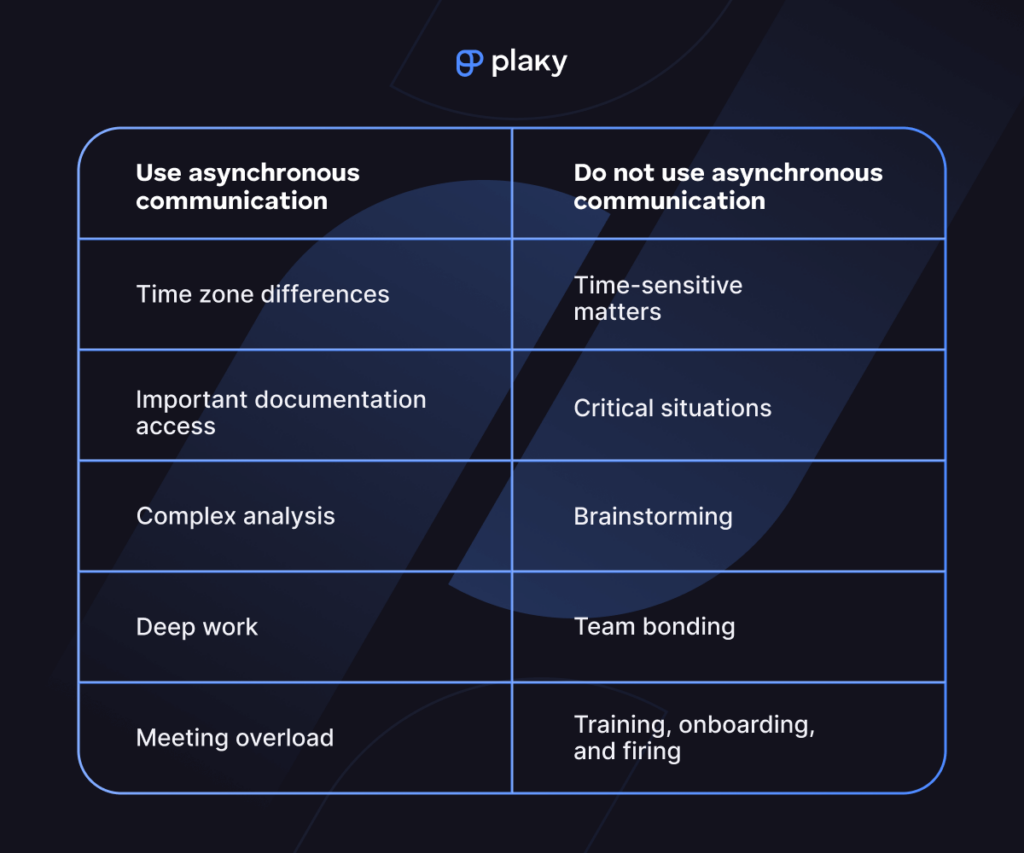
Best practices for using asynchronous communication
It takes time for companies to change workplace cultures to fit asynchronous modes of communication, as it all depends on the needs of their teams and the nature of work.
Let’s go over some of the practices you can adopt that will help you map out an effective strategy for async communication and skyrocket your and your team’s productivity.
#1: Establish clear guidelines
As many people still schedule meetings by default, it is a good idea to set out clear rules and draw up an async communication plan.
To establish clear guidelines for your team, make sure you include the following:
- A list of approved communication channels within the company,
- A list of meetings and communication examples that should be shared asynchronously or synchronously,
- Expectations regarding response times,
- Practices for sharing and storing important information, and
- Rules of correct communication etiquette.
#2: Ensure access to relevant documentation and resources
Have you ever been in a situation where you need information and you know who you should ask for it, but that person is not available? Having a centralized document-sharing hub can save the day.
This space would be accessible to everyone, so it should ultimately improve transparency. Also, by keeping all relevant documentation and resources in one central repository, you refine business processes and encourage smooth collaboration.
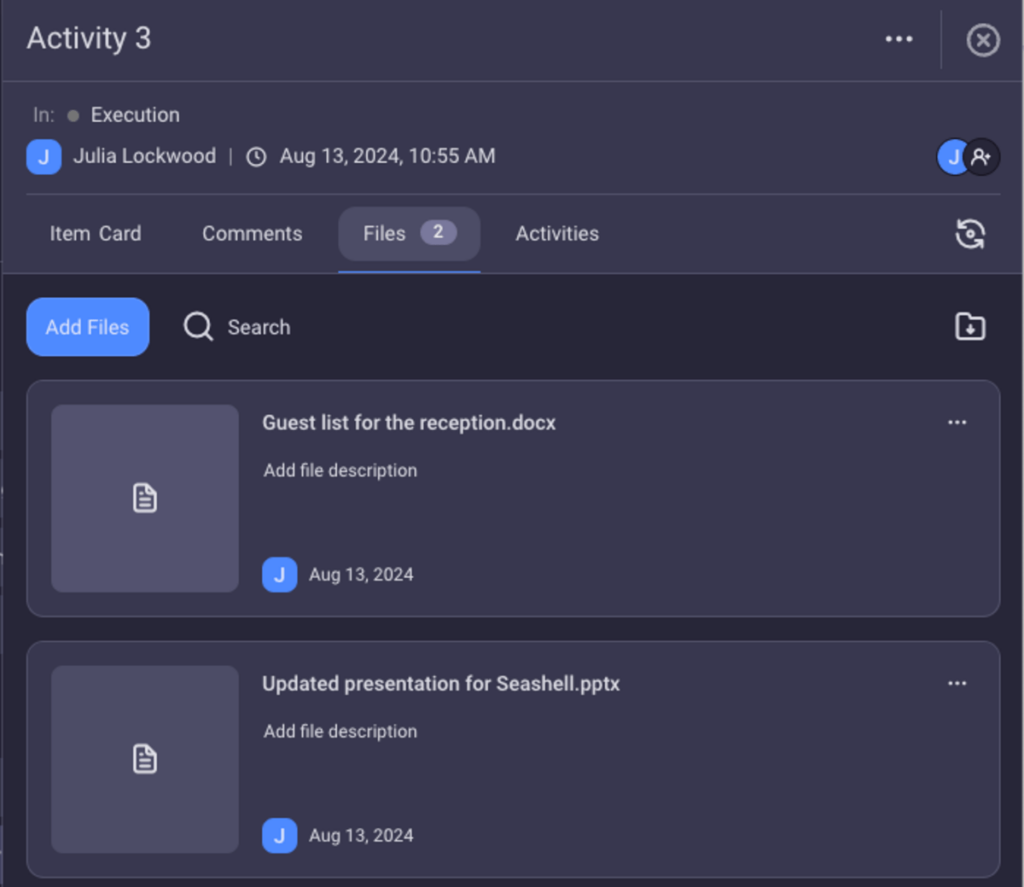
#3: Plan ahead and set clear expectations for response times
Time-neutral communication allows workers to work at their own pace and respond when it suits them best. However, that does not mean they can answer ANY time they like.
To avoid misunderstandings and prevent delays, you should set clear expectations for response times so that everyone has time to reflect on the matter without holding back the project.
That said, planning ahead plays a crucial role here. If remote team members know who does what and when in advance, they can also plan their workdays accordingly and deliver or respond in a timely manner.
#4: Give the green light to a no-meeting day
Level up async communication by trying a no-meeting day to let your teams focus on priority tasks. A day without back-to-back meetings serves as a meeting detox, so it should help reduce stress too.
#5: Communicate your preferred working hours
Team members working in different time zones should share their preferred working hours and when they are available and open to questions. If you work in shifts or need to run errands, you should notify everyone on the team about that too.
You can mark your working hours in your online calendar or inform the team through the company’s preferred business chat app.
#6: Embrace every chance for deep work
After you inform everyone about your working hours, leave some time to include focus time intervals in your online calendar.
If you have the opportunity, use emoticons or other settings to mark deep work time in your communication apps.
Also, remember that scheduling meetings one after another can save an hour or two (or even more, if you’re lucky) for your deep work periods.
#7: Choose the right tools
The market is flooded with various communication and collaboration tools that could help you run your business better. But, bear in mind that not all asynchronous tools are suitable for your particular needs.
Make sure you opt for those that your team prefers and that make your work simple and rewarding.
Some of the solutions you have available are:
- Email,
- Team communication apps,
- Text messages,
- Time tracking apps, and
- Project management apps.
Here’s how you can keep track of all your tasks and stay in touch with teammates in a project management tool like Plaky.
#8: Don’t write off synchronous communication
Synchronous communication still holds an important role in business communication, and its benefits should not be undermined by teams.
Apart from using it in urgent situations and in-person discussions, rely on synchronous communication when you want to get the team together, build trust, and combat the social isolation dispersed team members face.
Take asynchronous collaboration to the next level with Plaky
Thriving teams need a reliable and simple tool to advance their communication methods. And that’s exactly where Plaky comes in.
Plaky is cloud-based team collaboration software that enables you to enjoy all the benefits of async communication — and it can also be used for flawless synchronous communication within tasks.
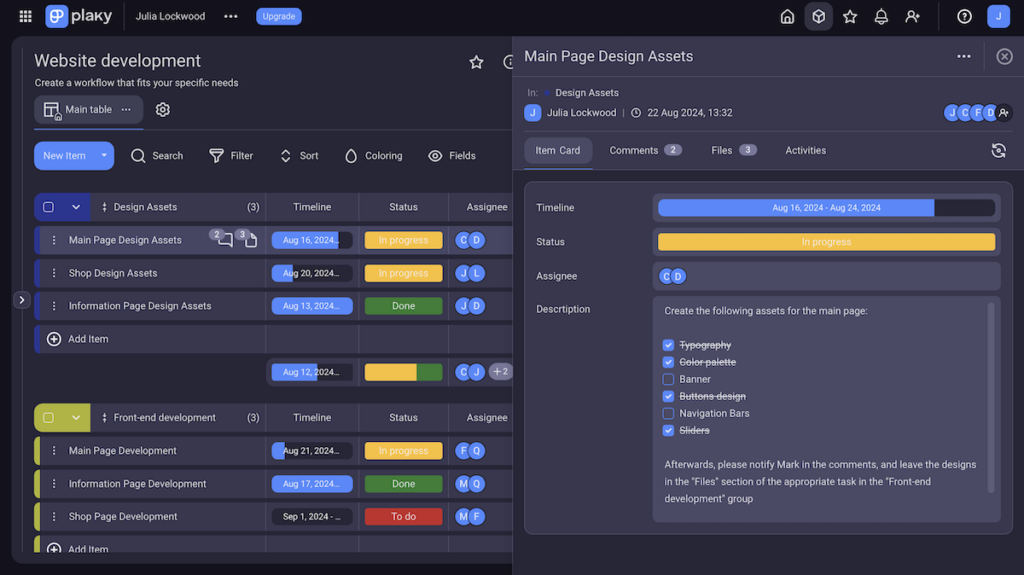
Make team communication and collaboration a walk in the park with Plaky by:
- Aligning your remote team with no time zone boundaries,
- Organizing your tasks and tracking their progress around the clock,
- Adding more details with custom fields (e.g., status, task description, and due date) to boost organization and accountability, and
- Sharing key files and providing access to all relevant people to minimize delays and mistakes.
With Plaky, you also ensure nothing falls through the cracks. Every crucial piece of project-related data is kept safe in Plaky and available to you and your team members 24/7.
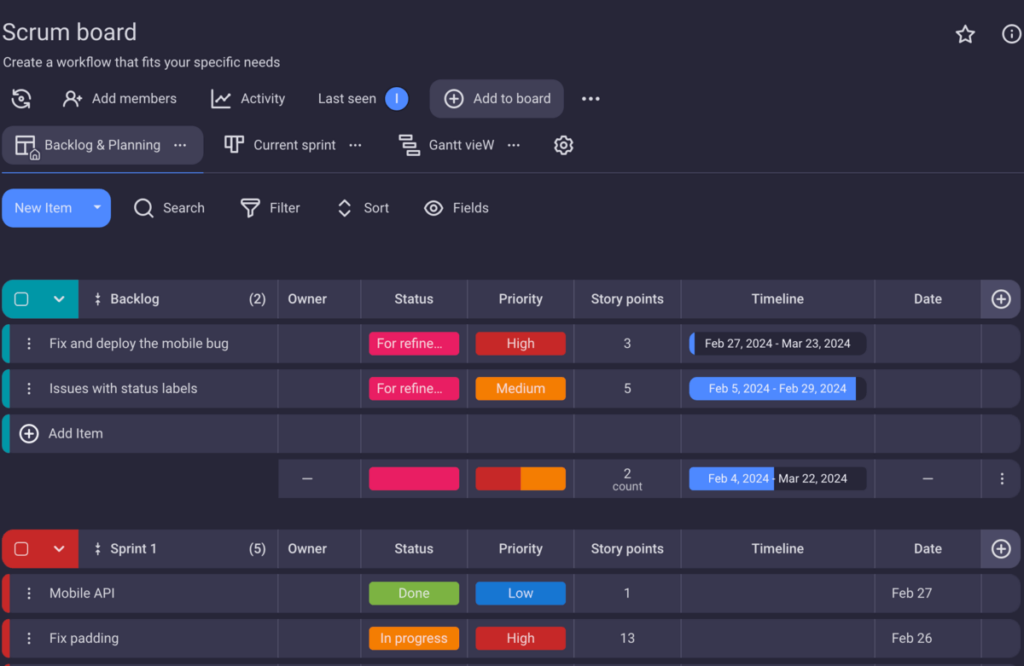
Whatever time zone you work in, you can also leave comments and feedback right in the task and @mention team members to get their attention. Plus, when you’re in a pinch, you can use emojis to quickly acknowledge comments, express agreement, and more.
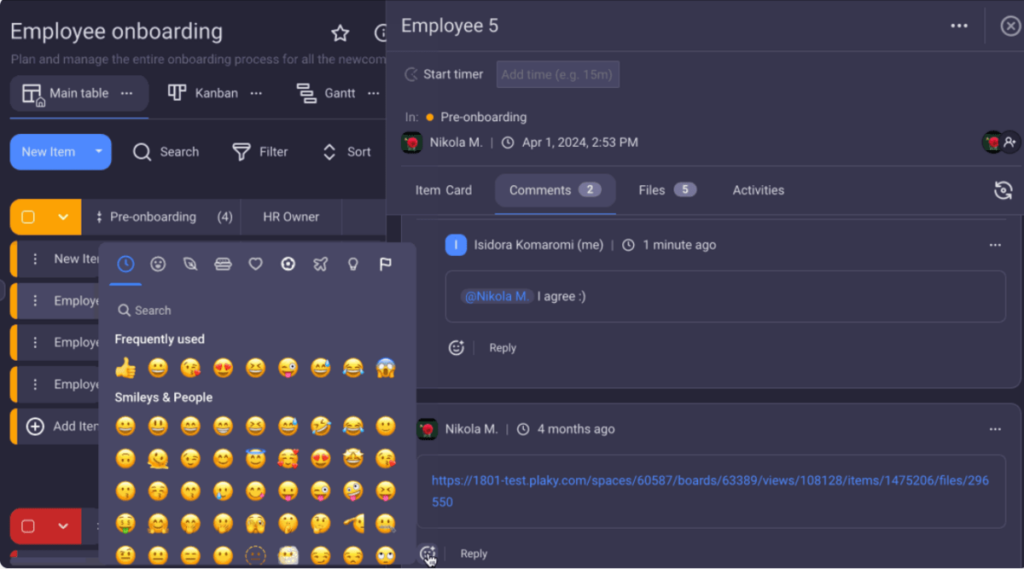
And as if that weren’t enough, you can easily catch up with everything that occurred while you were off work. No more missed deadlines or nasty surprises; with Plaky’s activity log, you get access to a real-time record of all item and board changes, which lets you stay in the loop — and continue making informed decisions.
So what are you waiting for? Ensure effective asynchronous communication with Plaky. Sign up for free today!


